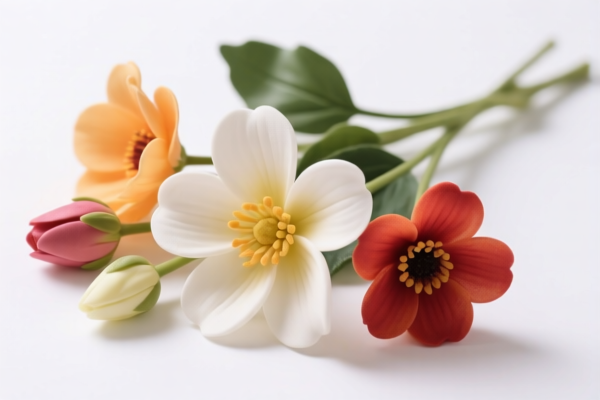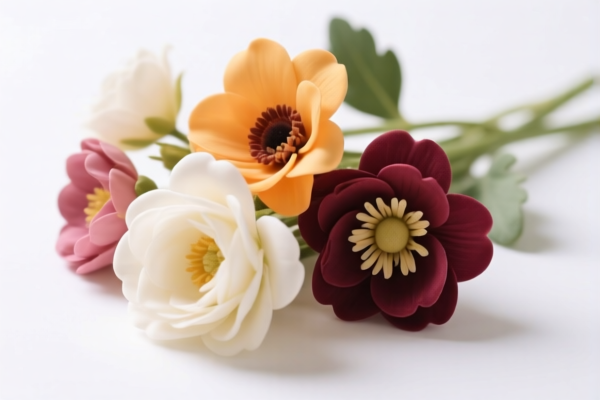| HS Code | Official Doc | Tariff Rate | Origin | Destination | Effective Date |
|---|---|---|---|---|---|
| 6702102000 | Doc | 38.4% | CN | US | 2025-05-12 |
| 6702903500 | Doc | 39.0% | CN | US | 2025-05-12 |
| 6701006000 | Doc | 59.7% | CN | US | 2025-05-12 |
| 3926400010 | Doc | 35.3% | CN | US | 2025-05-12 |
| 3921901500 | Doc | 61.5% | CN | US | 2025-05-12 |
| 3921901950 | Doc | 60.3% | CN | US | 2025-05-12 |
| 5609003000 | Doc | 59.5% | CN | US | 2025-05-12 |
| 5609004000 | Doc | 58.9% | CN | US | 2025-05-12 |
| 5404900000 | Doc | 55.0% | CN | US | 2025-05-12 |
| 5601290010 | Doc | 59.0% | CN | US | 2025-05-12 |
| 5601290090 | Doc | 59.0% | CN | US | 2025-05-12 |




Silk Artificial Flower Bouquet
A silk artificial flower bouquet is a decorative arrangement of flowers crafted from silk or synthetic silk-like fabrics, designed to mimic the appearance of natural blooms. These bouquets offer a lasting alternative to fresh flowers, requiring no watering or maintenance.
Material:
- Silk: Historically, genuine silk was the primary material, valued for its realistic texture and sheen. However, it is now less common due to cost and fragility.
- Polyester: The most prevalent material today. Polyester fabrics are durable, affordable, and can be easily dyed and textured to resemble various flower types.
- Other Synthetics: Nylon, rayon, and plastic components are frequently used for stems, leaves, and structural support.
- Wire: Used within stems for shape and flexibility.
Purpose:
- Decoration: Primarily used for aesthetic enhancement in homes, offices, and event spaces.
- Event Decoration: Popular for weddings, parties, funerals, and corporate events due to their durability and reusability.
- Gifting: Can serve as a long-lasting gift alternative to fresh flower arrangements.
- Allergy-Friendly: Suitable for individuals with pollen allergies.
Function:
- Visual Appeal: Provides the aesthetic benefits of flowers without the need for care.
- Long-Lasting Display: Retains appearance for extended periods, unlike fresh flowers which wilt.
- Versatility: Adaptable to various décor styles and settings.
- Cost-Effectiveness: Over time, can be more economical than repeatedly purchasing fresh flowers.
Usage Scenarios:
- Home Décor: Centerpieces, table accents, shelf displays, and room accents.
- Wedding Décor: Bridal bouquets, bridesmaid bouquets, ceremony decorations, reception centerpieces.
- Event Planning: Stage decorations, photo backdrops, corporate events.
- Commercial Displays: Retail store decorations, hotel lobbies, restaurant settings.
- Memorials & Funerals: Sympathy arrangements as a lasting tribute.
Common Types:
Bouquets are categorized by the flower types they feature, arrangement style, and overall aesthetic:
- Rose Bouquets: The most popular choice, available in various colors and sizes.
- Mixed Bouquets: Combinations of different flower types, such as roses, lilies, peonies, and hydrangeas.
- Peony Bouquets: Known for their large, full blooms and romantic appearance.
- Hydrangea Bouquets: Characterized by their voluminous, clustered flower heads.
- Sunflower Bouquets: Bright and cheerful arrangements.
- Orchid Bouquets: Elegant and sophisticated arrangements.
- Wildflower Bouquets: Rustic and natural-looking arrangements.
- Cascade Bouquets: Featuring flowers arranged in a flowing, downward-sweeping style, often used for weddings.
- Posy Bouquets: Small, hand-tied bouquets, often used for bridesmaids or as simple table decorations.
- Round Bouquets: Classic, symmetrical arrangements.
The declared goods are silk artificial flower bouquets, which are ornamental arrangements composed of artificial flowers made from silk materials. These bouquets are typically used for decorative purposes, gifting, or event embellishment.
The following HS codes are relevant based on the provided reference material:
- 6702102000: This HS code covers artificial flowers, foliage, and fruit, and parts thereof, made of plastics, assembled by binding with flexible materials such as wire, paper, textile materials, or foil, or by gluing or by similar methods. While the bouquet is made of silk, the assembly method (binding, gluing) falls under this classification. Tax Rate Details: Basic tariff: 8.4%, Additional tariff: 0.0%, Post-April 2, 2025, additional tariff: 30.0%. Total tariff: 38.4%.
- 6702903500: This HS code covers artificial flowers, foliage and fruit and parts thereof, made of other materials, specifically of man-made fibers. Silk is a man-made fiber, making this a potential classification. Tax Rate Details: Basic tariff: 9.0%, Additional tariff: 0.0%, Post-April 2, 2025, additional tariff: 30.0%. Total tariff: 39.0%.
- 5601290010: This HS code covers wadding of textile materials and articles thereof, containing 85 percent or more by weight of silk or silk waste. If the bouquet construction involves significant silk wadding or filling, this code may apply. Tax Rate Details: Basic tariff: 4.0%, Additional tariff: 25.0%, Post-April 2, 2025, additional tariff: 30.0%. Total tariff: 59.0%.
- 5601290090: This HS code covers wadding of textile materials and articles thereof, other. If the bouquet construction involves silk wadding or filling, but does not meet the 85% silk requirement, this code may apply. Tax Rate Details: Basic tariff: 4.0%, Additional tariff: 25.0%, Post-April 2, 2025, additional tariff: 30.0%. Total tariff: 59.0%.
Important Note: The applicable HS code will depend on the specific composition and manufacturing process of the silk artificial flower bouquet. If the bouquet is primarily assembled using binding or gluing techniques, 6702102000 may be most appropriate. If the bouquet is made of silk fibers, 6702903500 may be more suitable. If the bouquet contains significant silk wadding, either 5601290010 or 5601290090 may apply, depending on the silk content.
Customer Reviews
No reviews yet.